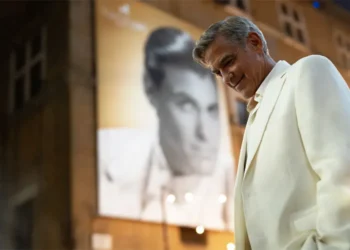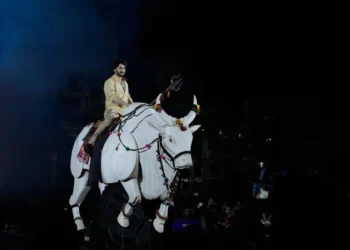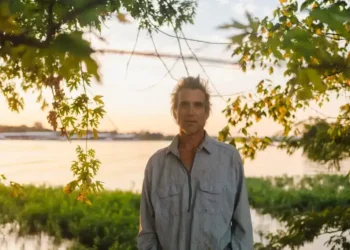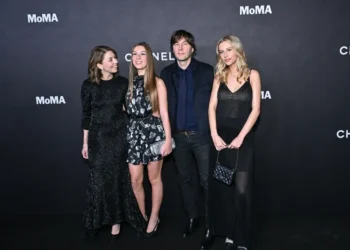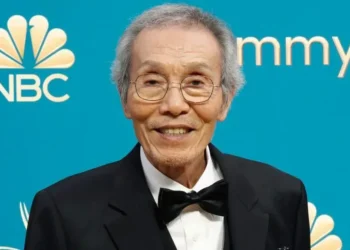Movie Review: In 28 Years Later, Rage Still Rules — But So Does Danny Boyle’s Wild Energy
It’s been more than two decades since Danny Boyle’s 28 Days Later redefined the zombie genre — even if Boyle insists his “infected” aren’t really zombies at all. Now, in 28 Years Later, the virus is still raging, Britain is still quarantined, and Boyle is back at the helm, reuniting with original screenwriter Alex Garland. But while the franchise remains as intense and unsettling as ever, this latest installment takes some wild swings — and not all of them hit.
A Pandemic Revisited — But Not the One You Think
When 28 Days Later debuted in 2002, it felt oddly prophetic — exploring the collapse of civilization through a fast-spreading rage virus, long before the word “pandemic” became part of everyday life. Now, after we’ve actually lived through a global pandemic, you might expect 28 Years Later to draw clear parallels. But instead of leaning into COVID, Boyle’s new film seems more preoccupied with Brexit.
Britain has been completely cut off from the mainland, the virus still contained within its borders. Survivors cluster on remote islands, and the rest of the world watches from afar.
Life on the Edge — and Under Siege
Most of the action takes place on a remote island off northeast Britain, connected to the mainland only by a stone causeway that floods at high tide. It’s a hauntingly medieval scene, where bows and arrows guard watchtowers, and villagers live in a fragile state of calm — always one shriek away from chaos.
At the center is 12-year-old Spike (newcomer Alfie Williams, a standout), who lives with his gruff, survivalist father Jamie (Aaron Taylor-Johnson) and his bedridden mother Isla (a disturbingly detached Jodie Comer). Spike’s coming-of-age begins when he ventures off the island with his father, quickly introduced to the brutal ritual of slaying the infected.
“They’re all lyin’, Mum,” he tells his mother later, after seeing firsthand how myth and machismo dominate the island’s survivalist ethos.
A Chaotic Road Trip Through Ruined Britain
From there, 28 Years Later shifts into a kind of dystopian road movie, with Spike determined to bring his ailing mother to a mysterious doctor whose fires burn nonstop on the horizon. The journey brings them into contact with a host of odd characters: Ralph Fiennes as the eccentric orange-hued doctor, Edvin Ryding as a marooned Swedish NATO soldier, and plenty of infected — some sprinting like Olympians, others crawling through dirt, worm-hunting “Slow-Lows.”
Boyle’s direction — frenetic as ever — leans heavily into a DIY aesthetic. Much of the film was shot on iPhones, adding to the disorienting vibe. While it creates some raw, visceral moments, the overall effect is often jarring. The tone lurches from horror to satire to near slapstick, which can make the story feel uneven and hard to follow.
Messy but Meaningful
Despite its scattershot style, 28 Years Later isn’t without substance. It offers quiet reflections on mortality, toxic masculinity, and misguided heroism — all layered beneath the blood and carnage. Spike’s journey from boy to reluctant savior is surprisingly touching, even as spines are ripped from bodies around him.
There’s an admirable refusal here to play by conventional blockbuster rules. This isn’t a sleek, sanitized zombie flick. It’s scrappy, weird, occasionally profound — and absolutely unpredictable.
What’s Next for the Franchise?
Boyle isn’t done yet. The next chapter, 28 Days Later: The Bone Temple, directed by Nia DaCosta, is already in the can. And if all goes according to plan, 28 Years Later will serve as the launchpad for an entirely new trilogy. Apparently, rage — like pandemic horror — never truly dies.
Final Verdict:
28 Years Later is far from perfect. It’s messy, chaotic, and tonally all over the map. But it’s also daring, thought-provoking, and occasionally brilliant. If you’re looking for slick, crowd-pleasing horror, this might not be your thing. But if you can embrace the madness, it’s a wild ride worth taking.
2 stars out of 4
Rated R for strong bloody violence, grisly images, graphic nudity, language, and brief sexuality.
Runtime: 115 minutes
Distributed by: Sony Pictures
This article was rewritten by JournosNews.com based on verified reporting from trusted sources. The content has been independently reviewed, fact-checked, and edited for accuracy, neutrality, tone, and global readability in accordance with Google News and AdSense standards.
All opinions, quotes, or statements from contributors, experts, or sourced organizations do not necessarily reflect the views of JournosNews.com. JournosNews.com maintains full editorial independence from any external funders, sponsors, or organizations.
Stay informed with JournosNews.com — your trusted source for verified global reporting and in-depth analysis. Follow us on Google News, BlueSky, and X for real-time updates.


